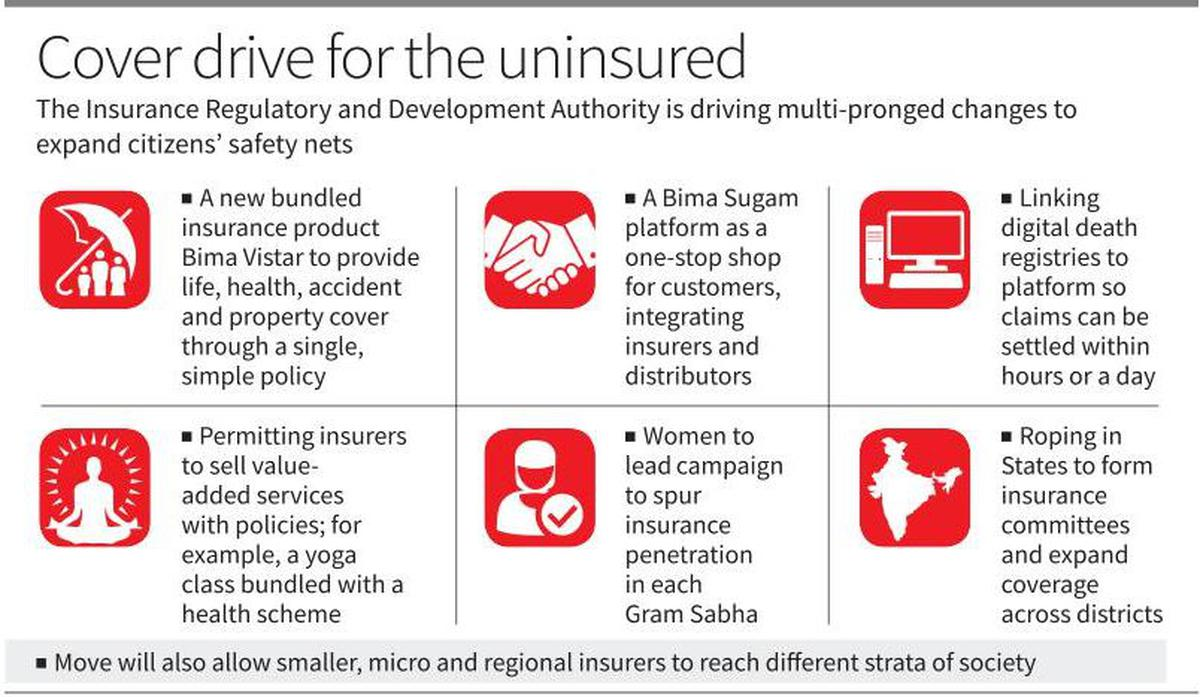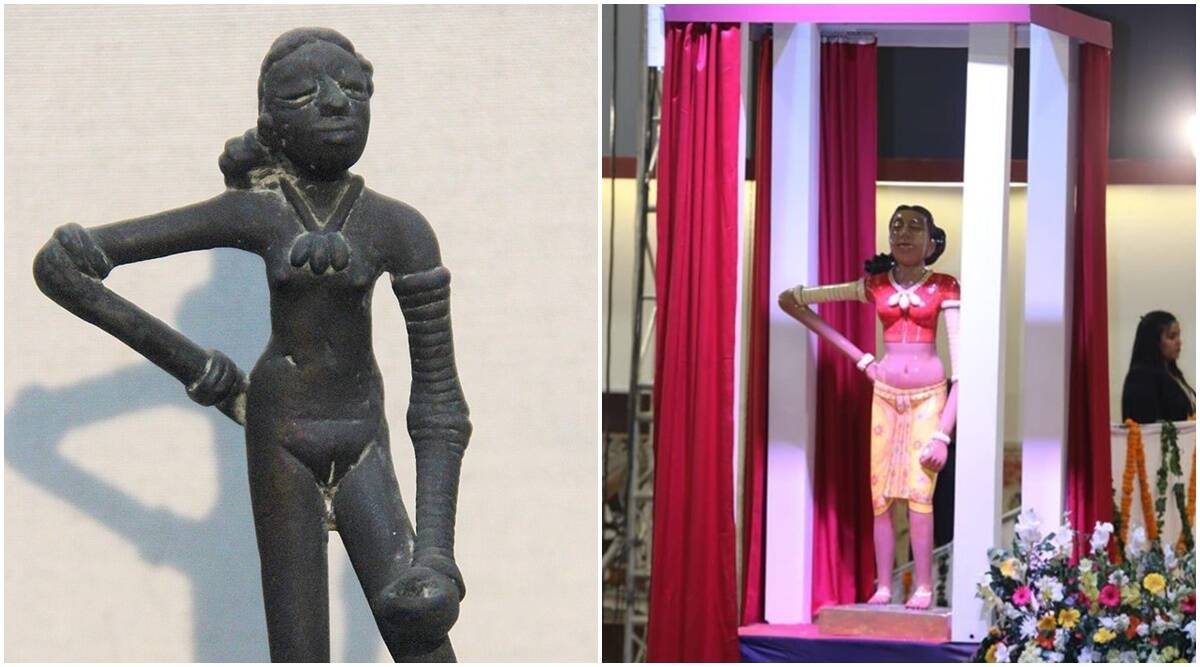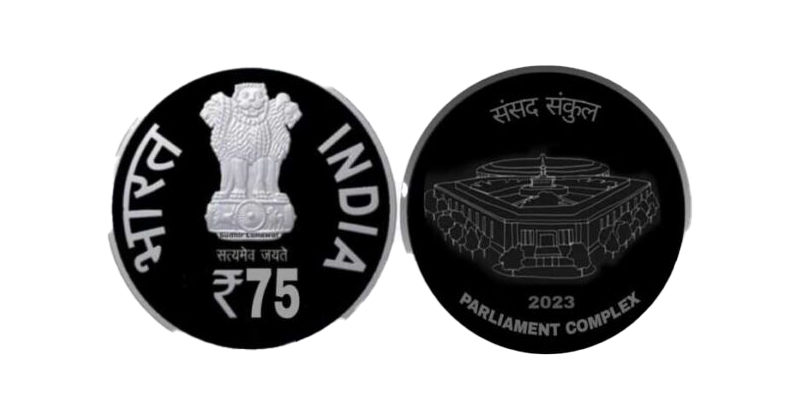Economy
IRDAI Vision 2047
For Prelims: IRDAI, Insurance for all’ by 2047, Economic Survey 2022-23, GDP, Digitization, Bima Trinity.
For Mains: IRDAI Vision 2047.
Why in News?
The Insurance Regulatory and Development Authority of India (IRDAI), as part of its Vision Insurance for all’ by 2047, has allotted states and union territories to every insurer to increase insurance penetration in India.
- IRDAI is also planning to launch Bima Trinity - Bima Sugam, Bima Vistar, Bima Vaahaks – in collaboration with general and life insurance firms to make insurance activities hassle free.
What is IRDAI Vision 2047?
- Objective:
- Insurance for All by 2047 aims that every citizen has an appropriate life, health and property insurance cover and every enterprise is supported by appropriate insurance solutions.
- It also aims to make the Indian insurance sector globally attractive
- Pillars:
- Insurance customers (Policyholders)
- Insurance providers (insurers)
- Insurance distributors (intermediaries)
- Focus Areas:
- Making available right products to right customers
- Creating robust grievance redressal mechanism
- Facilitating ease of doing business in the insurance sector
- Ensuring the regulatory architecture is aligned with the market dynamics
- Boosting innovation
- Competition and distribution efficiencies while mainstreaming technology and moving towards principle based regulatory regime.
- Significance:
- It can help people in households all over the country to have access to an affordable insurance policy that covers health, life, property, and accidents.
- These policies would offer faster claim settlements, sometimes within hours, and additional benefits like gym or yoga memberships.
What is Bima Trinity?
- Bima Sugam:
- It is a unified platform that combines insurers and distributors. It simplifies policy purchases, service requests, and claims settlement for customers in one convenient portal.
- Bima Vistar:
- It is a comprehensive bundled policy that covers life, health, property, and accidents. It provides defined benefits for each risk category, ensuring quick claim payouts without surveyors.
- Bima Vaahaks:
- It is a women-centric workforce operating at the Gram Sabha level. They will educate and convince women about the benefits of comprehensive insurance, particularly Bima Vistar. By addressing concerns and emphasizing advantages, Bima Vaahaks empower women and enhance their financial security.
What is the State of Insurance Sector in India?
- According to the Economic Survey 2022-23, life insurance density in the country increased from USD 11.1 in 2001 to USD 91 in 2021. Total global insurance premiums in 2021 increased 3.4% in real terms, with the non-life insurance sector registering 2.6% growth, driven by rate hardening in commercial lines in developed markets.
- According to the Economic Survey 2022-23, India's insurance market is poised to emerge as one of the fastest-growing markets globally in the coming decade.
- As per the IRDAI, insurance penetration in India increased from 3.76% in 2019-20 to 4.20%in 2020-21, registering a growth of 11.70%.
- Also, the insurance density increased from USD 78 in 2020-21 to USD 91 in 2021-22.
- Life insurance penetration in 2021 was 3.2%, almost twice as high as the emerging markets and slightly above the global average.
- India is at present the 10th biggest market in the world it is projected to be 6th biggest by 2032.
What are the Challenges Related to Insurance Sector
- Lower Adoption Rate:
- Insurance is not widely adopted in India compared to other countries. This is because many people are not aware of insurance or don't trust it.
- In rural areas, where a large portion of the population lives, only a small percentage have life insurance coverage.
- The insurance industry's contribution to India's GDP (Gross Domestic Product) is less than 5%, which is lower than the global average. In simple terms, insurance is not widely used in India, and efforts are needed to increase awareness and trust in insurance products.
- Lack of Product Innovation:
- The insurance sector in India has been slow in product innovation. Many insurance companies offer similar products, which leads to a lack of differentiation in the market.
- Fraudulence:
- Fraud includes things like making false claims and lying about information.
- The use of digital technology and customer-focused policies may have unintentionally given fraudsters more chances to steal identities and make fake claims.
- Over 70% of Indian insurers have seen an increase in fraud cases in the past two years.
- Talent Management:
- The insurance sector in India faces a talent shortage. The industry needs skilled professionals in areas such as actuarial science, underwriting, claims, and risk management.
- Attracting and retaining talented professionals is a challenge for the industry.
- Slow Rate of Digitalization:
- The insurance sector in India has been slow to adopt digitalization compared to other industries, which has resulted in several challenges such as inefficient processes, lack of transparency, and poor customer experience.
- Claims Management:
- The claims process in India is often seen as complicated, slow, and opaque, which can lead to customer dissatisfaction and loss of trust in the insurance industry.
- This can be due to a lack of transparency, inefficient processes, and poor communication with customers.
What is IRDAI?
- IRDAI, founded in 1999, is a regulatory body created with the aim of protecting the interests of insurance customers.
- It is a statutory body under the IRDA Act 1999 and is under the jurisdiction of Ministry of Finance.
- It regulates and sees to the development of the insurance industry while monitoring insurance-related activities.
- The powers and functions of the Authority are laid down in the IRDAI Act, 1999 and Insurance Act, 1938.
Way Forward
- To improve the insurance sector in India, several steps can be taken to leverage technology, align with customer behavior, optimize data usage, simplify claims management, adopt hybrid distribution models, and tackle fraud.
- Digitalization should be a priority across the value chain to reduce costs, improve efficiency, and support ecosystem development. This involves using technology to enhance employee skills and productivity through upskilling programs.
- Insurers need to align with dynamic changes in customer behavior and preferences. By offering quick personalized products and prioritizing flexibility over mass offerings, insurers can better meet customer needs and manage perceptions.

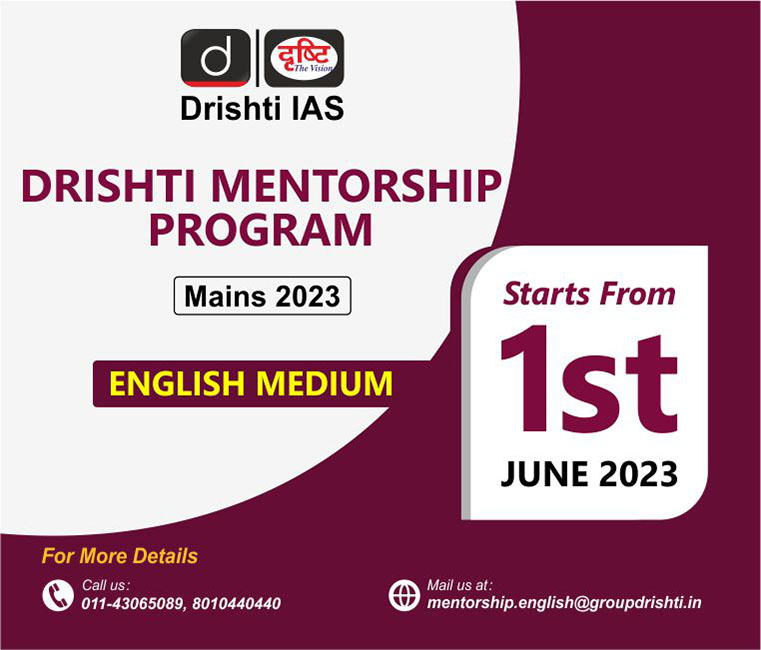
Indian Economy
Falling Yield on Government Securities
For Prelims: Government security (G-sec), Debt instrument, Bond Yield
For Mains: Concept of G- Sec and their significance, Compare G-secs with alternative investment options
Why in News?
The yield on the benchmark 10-year government security (G-sec) in India has witnessed a decline, posing a question to retail investors about their investment strategy.
- The Reserve Bank of India (RBI) have opened up the government securities market to retail investors, but their participation has been relatively low.
Why did the Yield of G-secs Decline?
- The yield on the benchmark 10-year government security (G-sec) has fallen to 6.9 % (May 2023) from 7.4 % in early March 2023 after changes in debt mutual fund taxation. It is currently trading at around 6.96-6.99%.
- The benefit of indexation in the calculation of long-term capital gains on debt mutual funds was removed.
- Various factors such as changes in debt mutual fund taxation, the RBI's decision on the repo rate, and declining inflation have influenced the downward movement of government security yields.
What are the Reasons for Low Participation of Retail Investors in G-Secs?
- Lack of Investor Guidance:
- Retail investors find it complicated to invest in government bonds and require guidance, possibly through intermediaries, to navigate the process.
- Limited Liquidity:
- The G-Sec market lacks liquidity, making it challenging for retail investors to find buyers in the secondary market when they want to sell their securities.
- This lack of liquidity can result in investors being stuck with their investments.
- The G-Sec market lacks liquidity, making it challenging for retail investors to find buyers in the secondary market when they want to sell their securities.
- Complexity of Investment:
- Retail investors, especially uninformed participants, may find the investment process in G-Secs daunting and prefer more simplified investment options like fixed deposits.
- The RBI Retail Direct platform is beneficial for informed investors but may not cater to uninformed participants who require a simpler investment process.
- Retail investors, especially uninformed participants, may find the investment process in G-Secs daunting and prefer more simplified investment options like fixed deposits.
- Low Trading Volumes:
- The traded volume in the secondary market for G-Secs has been relatively low, further reducing the attractiveness for retail investors.
- Alternative Investment Options:
- Retail investors may consider other investment avenues such as fixed deposits, which have seen increased interest rates, or exploring new bonds, NCDs (Non-Convertible Debentures), and post office deposit schemes.
What are Government Securities?
- About:
- A G-Sec is a tradable instrument issued by the Central Government or the State Governments.
- A G-Sec is a type of debt instrument issued by the government to borrow money from the public to finance its Fiscal Deficit.
- A debt instrument is a financial instrument that represents a contractual obligation by the issuer to pay the holder a fixed amount of money, known as the principal or face value, on a specified date.
- It acknowledges the Government’s debt obligation. Such securities are short-term (usually called treasury bills, with original maturities of less than one year- presently issued in three tenors, namely, 91-day, 182 day and 364 day) or long-term (usually called Government bonds or dated securities with an original maturity of one year or more).
- In India, the Central Government issues both, treasury bills and bonds or dated securities while the State Government issue only bonds or dated securities, which are called the State Development Loans (SDLs).
- G-Secs carry practically no risk of default and, hence, are called risk-free gilt-edged instruments.
- Gilt-edged securities are high-grade investment bonds offered by governments and large corporations as a means of borrowing funds.
- The RBI conducts (Open Market Operations) OMOs for sale or purchase of G-secs to adjust money supply conditions.
- The RBI sells g-secs to remove liquidity from the system and buys back g-secs to infuse liquidity into the system.
- Bond Yield:
- Bond yield is the return an investor realizes on a bond. The mathematical formula for calculating yield is the annual coupon rate divided by the current market price of the bond. Price and yield are inversely related: As the price of a bond goes up, its yield goes down, and vice versa.
- Bond:
- It is an instrument to borrow money. A bond could be issued by a country’s government or by a company to raise funds.
- Coupon Rate:
- It is the rate of interest paid by bond issuers on the bond's face value.
- Bond:
- Bond yield is the return an investor realizes on a bond. The mathematical formula for calculating yield is the annual coupon rate divided by the current market price of the bond. Price and yield are inversely related: As the price of a bond goes up, its yield goes down, and vice versa.
What are the Types of G-Secs?
- Treasury Bills (T-bills):
- Treasury bills are zero coupon securities and pay no interest. Instead, they are issued at a discount and redeemed at the face value at maturity.
- Cash Management Bills (CMBs):
- In 2010, Government of India, in consultation with RBI introduced a new short-term instrument, known as CMBs, to meet the temporary mismatches in the cash flow of the Government of India. The CMBs have the generic character of T-bills but are issued for maturities less than 91 days.
- Dated G-Secs:
- Dated G-Secs are securities which carry a fixed or floating coupon (interest rate) which is paid on the face value, on half-yearly basis. Generally, the tenor of dated securities ranges from 5 years to 40 years.
- State Development Loans (SDLs):
- State Governments also raise loans from the market which are called SDLs. SDLs are dated securities issued through normal auction similar to the auctions conducted for dated securities issued by the Central Government.
UPSC Civil Services Examination, Previous Year Question (PYQ)
Prelims
Q. 1 In the context of the Indian economy, ‘Open Market Operations’ refers to (2013)
(a) borrowing by scheduled banks from the RBI
(b) lending by commercial banks to industry and trade
(c) purchase and sale of government securities by the RBI
(d) None of the above
Ans: (c)
Q.2 Consider the following statements: (2018)
- The Reserve Bank of India manages and services Government of India Securities but not any State Government Securities.
- Treasury bills are issued by the Government of India and there are no treasury bills issued by the State Governments.
- Treasury bills offer are issued at a discount from the par value.
Which of the statements given above is/are correct?
(a) 1 and 2 only
(b) 3 only
(c) 2 and 3 only
(d) 1, 2 and 3
Ans: (c)


Governance
National Population Register
For Prelims: National Population Register, Census, House listing, Citizenship Act 1955, NRC, Citizenship.
For Mains: National Population Register.
Why in News?
For Census 2021, the Government has made the National Population Register (NPR) mandatory, allowing citizens to self-enumerate, for individuals who wish to fill out the census form themselves instead of relying on government enumerators.
- Self-enumeration refers to the completion of census survey questionnaires by the respondents themselves. Self-enumeration will be provided to only those households that have updated NPR online.
- During self-enumeration, Aadhaar or mobile number will be mandatorily collected.
What set of Questionnaires have been Finalized for the Next Census?
- The upcoming Census will be the first digital one, allowing respondents to complete the questionnaire from their homes.
- The set of questions for the Houselisting and Housing Schedule phase has been finalized, while the questions for the Population Enumeration phase are yet to be notified.
- The comparison between the 2011 Census and the next one reveals new inquiries on travel time and metro rail usage for commuting.
- The question on disabilities includes additional categories like acid attack, intellectual disability, chronic neurological disease, and blood disorder.
- The next Census will also gather information on whether individuals living in rented houses own residential property elsewhere or do not own any.
- Clarifications are provided on the availability of drinking water within specific distances from the premises.
What is the National Population Register?
- About:
- NPR is a database containing a list of all usual residents of the country.
- A usual resident for the purposes of NPR is a person who has resided in a place for six months or more and intends to reside there for another six months or more.
- Its objective is to have a comprehensive identity database of people residing in the country.
- It is generated through house-to-house enumeration during the “house-listing” phase of the Census.
- NPR was first collected in 2010. It was updated in 2015 and already has details of 119 crore residents.
- In March 2020, the Ministry of Home Affairs (MHA) amended the Census Rules framed in 1990 to capture and store the Census data in an electronic form and enabled self-enumeration by respondents.
- NPR is a database containing a list of all usual residents of the country.
- Legal Backing:
- The NPR is prepared under the provisions of the Citizenship Act 1955 and the Citizenship (Registration of Citizens and Issue of National Identity Cards) Rules, 2003.
- It is mandatory for every “usual resident of India” to register in the NPR.
- Significance:
- It will streamline data of residents across various platforms.
- For instance, it is common to find a different date of birth of a person on different government documents. NPR will help eliminate that.
- It will help the government formulate its policies better and also aid national security.
- It will help to target government beneficiaries in a better way and also further cut down paperwork and red tape in a similar manner that Aadhaar has done.
- It will help in implementing the idea of ‘One Identity Card’ that has been recently floated by the government.
- ‘One Identity Card’ seeks to replace duplicate and siloed documentations of Aadhaar card, voter ID card, banking card, passport, and more.
- It will streamline data of residents across various platforms.
- NPR and NRC:
- According to Citizenship Rules 2003, NPR is the first step towards compilation of a National Register of Citizens (NRC). After a list of residents is created (i.e., NPR), a nationwide NRC could go about verifying the citizens from that list.
- However, unlike the NRC, the NPR is not a citizenship enumeration drive as it records even a foreigner staying in a locality for more than six months.
- NRC is a register prepared after the conduct of the Census of 1951 in respect of each village, showing the houses or holdings in a serial order and indicating against each house or holding the number and names of persons staying therein.
What is the Difference between NPR and Census?
- Objective:
- The census involves a detailed questionnaire - there were 29 items to be filled up in the 2011 census - aimed at eliciting the particulars of every person, including age, sex, marital status, children, occupation, birthplace, mother tongue, religion, disability and whether they belonged to any Scheduled Caste or Scheduled Tribe.
- On the other hand, NPR collects basic demographic data and biometric particulars.
- Legal Basis:
- The census is legally backed by the Census Act, 1948.
- The NPR is a mechanism outlined in a set of rules framed under the Citizenship Act, 1955.
- Comprehensive Identity Database:
- The NPR, unlike the Census, is a comprehensive identity database of every “usual resident” in the country and the data proposed to be collected at the family level can be shared with States and other government departments.
- Though Census also collects similar information, the Census Act of 1948 bars sharing any individual’s data with the State or Centre and only aggregate data at the administrative level can be released.
UPSC Civil Services Examination, Previous Year Questions (PYQ)
Prelims
Q. Consider the following statements: (2009)
- Between Census 1951 and Census 2001, the density of the population of India has increased more than three times.
- Between Census 1951 and Census 2001, the annual growth rate (exponential) of the population of India has doubled.
Which of the statements given above is/are correct?
(a) 1 only
(b) 2 only
(c) Both 1 and 2
(d) Neither 1 nor 2
Ans: (d)
Exp:
- One of the important indices of population concentration is the density of population. It is defined as the number of persons per square kilometre.
- The population density of India in 2001 was 324 persons per square kilometre and in 1951 it was 117. Thus, the density increased more than twice, but not thrice. Hence, statement 1 is not correct.
- At the beginning of the twentieth century, i.e., in 1901 the density of India was as low as 77 and this steadily increased from one decade to another to reach 324 in 2001.
- The average Annual Growth Rate in 2001 was 1.93 whereas in 1951 it was 1.25. Thus, it increased, but not doubled. Hence, statement 2 is not correct.
- Therefore, option D is the correct answer.
Mains
Q. Two parallel run schemes of the Government, viz the Adhaar Card and NPR, one as voluntary and the other as compulsory, have led to debates at national levels and also litigations. On merits, discuss whether or not both schemes need run concurrently. Analyse the potential of the schemes to achieve developmental benefits and equitable growth. (2014)


Social Issues
World Menstrual Hygiene Day
For Prelims: World Menstrual Hygiene Day, Government schemes to promote menstrual hygiene, Menstruation
For Mains: Issues Related to Women, comprehensive menstrual health education, India's initiatives and policies for menstrual hygiene
Why in News?
Recently, on the occasion of World Menstrual Hygiene Day, Child Rights and You (CRY) an NGO released the findings of a study conducted to assess the awareness and knowledge of menstrual hygiene and health among adolescent girls in India.
- The study conducted for two months with the participation of nearly 4,000 girls aged 10-17 years from 38 districts across the country, sheds light on the perceptions, practices, and challenges faced by young girls regarding menstruation.
What is World Menstrual Hygiene Day?
- About:
- World Menstrual Hygiene Day, also known as Menstrual Hygiene Day, is an annual global advocacy day celebrated on May 28th.
- The day aims to raise awareness and promote good menstrual hygiene management (MHM) practices worldwide.
- Reason for May 28th:
- Menstrual Hygiene Day is observed on the 28th day of the fifth month.
- Represents the average length of the menstrual cycle, which is often around 28 days.
- Symbolizes the average duration of menstruation, which lasts around five days each month.
- Menstrual Hygiene Day is observed on the 28th day of the fifth month.
- History:
- Started in 2013 by Germany-based NGO WASH United.
- Initially launched as a 28-day social media campaign to raise awareness about menstruation.
- Positive response led to the establishment of Menstrual Hygiene Day on May 28, 2014.
- Theme:
- Theme for 2023: "Making menstruation a normal fact of life by 2030."
- Significance:
- Highlights the importance of menstrual hygiene for the well-being and dignity of individuals who menstruate.
- Promotes proper menstrual hygiene practices:
- Using clean and safe menstrual products.
- Maintaining personal hygiene during menstruation.
- Managing menstrual discomfort effectively.
- Advocates for improved access to menstrual products, particularly in low-income communities.
- Encourages knowledge acquisition about bodies, menstrual cycles, and reproductive health.
What are the Key Findings from the Study?
- Close to 12% of young girls believed menstruation is a curse from God or caused by disease.
- 4.6% of the girls had no knowledge about the cause of menstruation.
- 84% of the girls correctly identified menstruation as a biological process.
- 61.4% of the girls acknowledged the existence of societal embarrassment related to periods.
- 44.5% of the girls used homemade absorbents or cloth instead of sanitary pads.
- Hesitation or shyness, difficulty in disposing of pads, poor availability, and lack of knowledge were reasons for not using sanitary pads.
- The girls received information about menstruation from their mothers, female friends and elder sisters.
What are the Challenges Faced by Young Girls Regarding Menstruation?
- Lack of knowledge and awareness about menstruation.
- Social stigma and taboos surrounding menstruation.
- Limited access to sanitary products and proper menstrual hygiene resources.
- Financial constraints to afford sanitary pads or other menstrual products.
- Inadequate sanitation facilities, especially in schools and public places.
- Lack of privacy and suitable disposal methods for used sanitary products.
- Unequal access to menstrual health education and support.
- Peer pressure and embarrassment related to discussing menstruation.
- Absence of open dialogue and support from family members and community.
- Disruption of daily activities and restrictions on participation due to menstrual discomfort or pain.
What are India’s Initiatives for Menstrual Hygiene?
- The Menstrual Hygiene Scheme, launched in 2011 by the Ministry of Health and Family Welfare, aims to promote menstrual hygiene among adolescent girls in rural areas.
- Swachh Bharat guidelines in 2015 included menstrual hygiene management (MHM) in schools, providing sanitary pads, vending, and disposal mechanisms, and exclusive washrooms for girl students.
- MHM was released by the Ministry of Drinking Water and Sanitation.
- Department of Pharmaceuticals under Ministry of Chemicals and Fertilizers implements the Pradhan Mantri Bharatiya Janausadhi Pariyojna (PMBJP), an important step in ensuring the health security for women.
- Under the project, over 8700 Janaushidhi Kendras have been set up across the country that provides Oxo-biodegradable sanitary napkins named Suvidha at Rs. 1/- per pad only.
- Supreme Court of India called for a uniform national policy in 2022 to ensure menstrual hygiene in schools, aiming to provide sanitary pads, vending and disposal mechanisms, and exclusive washrooms for girl students.
- Various states have their own schemes to distribute subsidised or free sanitary napkins to adolescent girls, such as Asmita Yojana (Maharashtra), Udaan (Rajasthan), Swechcha (Andhra Pradesh), She Pad (Kerala), and Khusi (Odisha).
- Kerala and Karnataka governments have been distributing menstrual cups as a sustainable alternative to sanitary napkins.
Way Forward
- Comprehensive Menstrual Health Education:
- Implement engaging and interactive workshops in schools to educate girls about menstrual hygiene, debunk myths, and promote positive attitudes.
- Incorporate menstrual health education into the curriculum, covering topics like menstrual cycles, hygiene practices, and emotional well-being.
- Accessible and Affordable Menstrual Products:
- Advocate for subsidies or free distribution of sanitary pads in schools, community centers, and public spaces to ensure accessibility for all girls.
- Encourage innovative solutions such as reusable menstrual products or eco-friendly alternatives to address affordability and environmental concerns.
- Sanitation Facilities:
- Raise funds or seek partnerships to install sanitary pad vending machines or dispensers in public spaces for easy access to menstrual products.
- Engaging Male Allies:
- Conduct workshops and awareness programs for boys and men to foster empathy and understanding about menstruation, reducing stigma and promoting supportive attitudes.
- Sports and Physical Activities:
- Promote physical activities, sports, and yoga as means to alleviate menstrual discomfort and improve overall well-being, breaking the stereotype that menstruation restricts girls' participation.

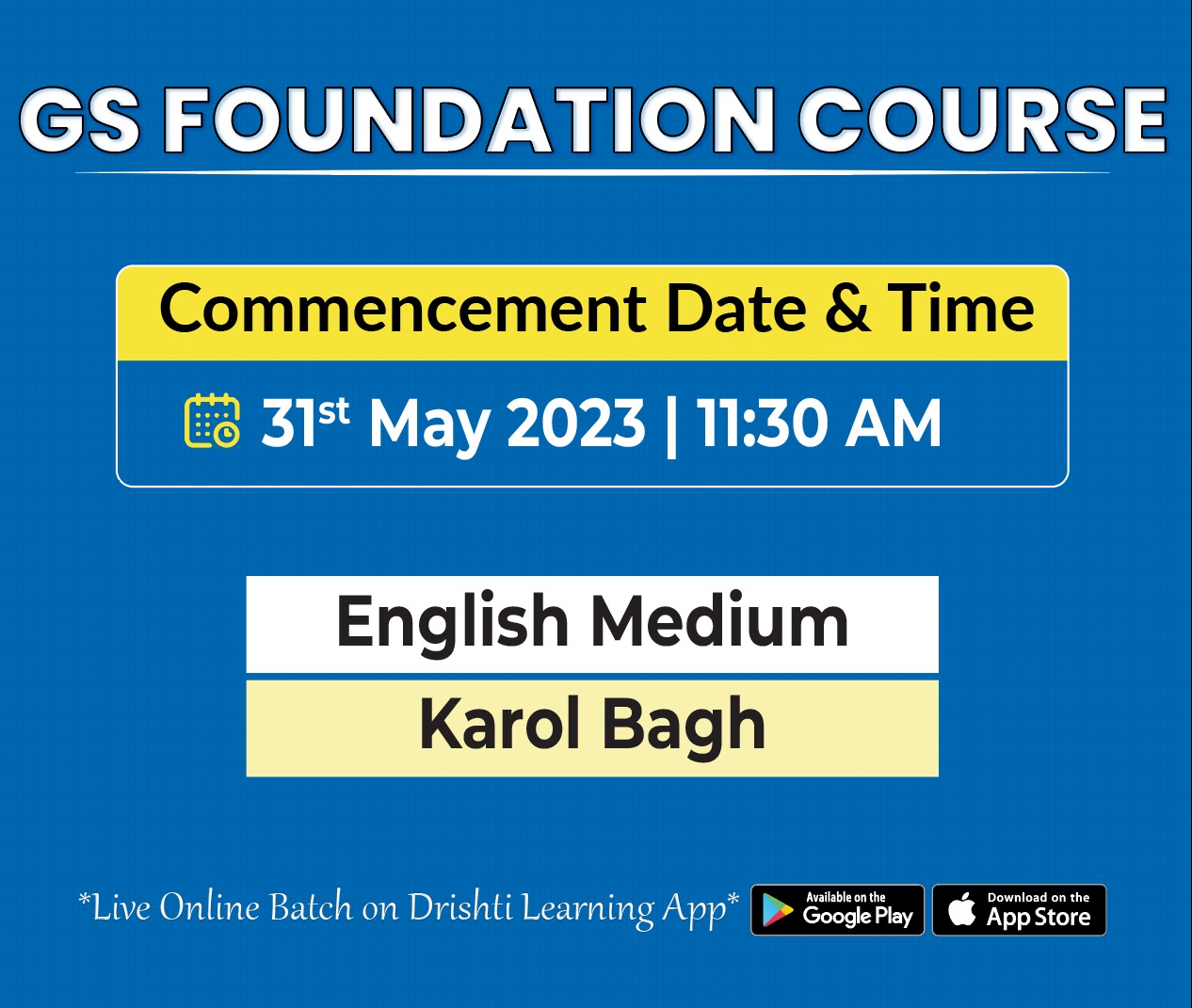
Important Facts For Prelims
NITI Aayog’s Annual Health Index 2020-21
Why in News?
Kerala, Tamil Nadu and Telangana emerged as the top performers among the ‘larger states’ in the NITI Aayog’s annual ‘health index’ for the Covid year of 2020-21.
What are the Major Highlights of the Index?
- Based on Overall Performance:
- Larger States:
- Among the 19 ‘larger states’, Kerala, Tamil Nadu and Telangana have occupied first, second and third place respectively, in terms of overall performance.
- Bihar (19th), Uttar Pradesh (18th) and Madhya Pradesh (17th) are at the bottom of the list.
- Smaller States:
- Among the eight smaller states, Tripura has recorded the best overall performance, followed by Sikkim and Goa; Arunachal Pradesh (6th), Nagaland (7th) and Manipur (8th) are at the bottom.
- Union Territories(UT):
- And among the eight UTs, Lakshadweep has been ranked as the top performer in terms of overall performance, while Delhi ranked at the bottom.
- Larger States:
- Based on Incremental Performance:
- Rajasthan, Uttarakhand and Odisha emerged as the top three performers in 2020-21, as compared to their performance in 2019-20.
What is NITI Aayog’s Annual Health Index?
- About:
- In 2017, the National Institution for Transforming India (NITI Aayog) in collaboration with the Ministry of Health and Family Welfare (MoHFW) and the World Bank initiated an annual Health Index for tracking Overall Performance and Incremental Performance across all states and Union Territories (UTs).
- Objective:
- The objective of the Annual Health Index is to track and rank progress on health outcomes and health systems performance, develop healthy competition and encourage cross learning among states and UTs.
- Parameters:
- The health index assesses states and UTs on two parameters – incremental performance (year-on-year progress) and overall performance.
- Categories:
- The ranking is done under three categories: larger states, smaller states and Union territories (UTs) to ensure comparison among similar entities.
- Composition:
- The Health Index is a composite score that reflects the achievements and incremental improvements of the states and UTs on 24 indicators across three domains: health outcomes, governance and information, and key inputs and processes.
- Each domain has been assigned weight based on its importance with a higher score for outcome indicators.
- The ‘health outcomes’ include indicators like neonatal mortality rate, total fertility rate, sex ratio at birth, immunization coverage, proportion of institutional deliveries, total case notification rate of tuberculosis, and proportion of people living with HIV on antiretroviral therapy.
- The ‘governance and information’ domain includes indicators like proportion of institutional deliveries, average occupancy (in months) of three key posts at state level, average occupancy (in months) of the chief medical officer, and days taken for fund transfer.
- The ‘key inputs/ processes’ is a measure of health infrastructure available, including the proportion of functional 24X7 primary healthcare centers, districts with functional cardiac care units, and vacancies in healthcare provider positions.
- The Health Index is a composite score that reflects the achievements and incremental improvements of the states and UTs on 24 indicators across three domains: health outcomes, governance and information, and key inputs and processes.
UPSC Civil Services Examination, Previous Year Questions (PYQs)
Q. The Government of India has established NITI Aayog to replace the (2015)
(a) Human Rights Commission
(b) Finance Commission
(c) Law Commission
(d) Planning Commission
Ans: (d)
Exp:
- In 1950, the Planning Commission was formed as an extra-constitutional body that would formulate and implement India’s Five Year Plans and allocate funds accordingly to the States; it followed a “Top-Down” approach.
- In 2015, the NDA government through a cabinet resolution dissolved the Planning Commission and replaced it with a new institution – NITI Aayog (National Institution for Transforming India) which emphasises on ‘Bottom-Up’ approach. It serves as a “Think Tank” and States are equal partners in deliberation (unlike in Planning Commission) to promote co-operative federalism.
- The Prime Minister is the Ex-officio chairman. The permanent members of the governing council are all the State Chief Ministers, along with the Chief Ministers of Delhi and Puducherry, the Lieutenant Governor of Andaman and Nicobar, and a vice chairman nominated by the Prime Minister.
- Therefore, option (d) is the correct answer.


Important Facts For Prelims
8th Governing Council Meeting of NITI Aayog
Why in News?
Recently, the Prime Minister of India has chaired the 8th Governing Council Meeting of NITI Aayog.
- It was attended by Chief Ministers/Lt.Governors representing 19 States and 6 UTs.
What are the Highlights of the Meeting?
- Theme:
- Viksit Bharat @ 2047: Role of Team India.
- PM’s Address:
- The Centre and the States would have to work as “Team India” to realise the objective of a “Viksit Bharat (Developed India)” in 2047.
- NITI Aayog can play a critical role in helping the States to develop their strategies for the next 25 years and align the same with the national development agenda.
- The States and Union Territories were urged to work with the Aayog so that the country could take a quantum leap towards achieving its vision for the “Amrit Kaal”.
- There is a need for the States and the Centre to promote “Shree Anna” in the International Year of Millets.
- He also deliberated on the need to work towards water conservation through the “Amrit Sarovar” programme.
What is NITI Aayog’s Governing Council?
- It is the premier body trusted with developing a shared vision of national priorities and strategies with the active involvement of States and Union Territories.
- It is a platform to discuss inter-sectoral, inter-departmental and federal issues.
- It comprises:
- The Prime Minister of India.
- Chief Ministers of all the states and union territories with the legislature.
- Lt Governors of other UTs.
- Ex-Officio Members,
- Vice Chairman, NITI Aayog,
- Full-Time Members, NITI Aayog.
- Special Invitees.
What is NITI Aayog?
- About:
- The Planning Commission was replaced by a new institution – NITI Aayog on 1st January, 2015 with emphasis on ‘Bottom –Up’ approach to envisage the vision of Maximum Governance, Minimum Government, echoing the spirit of ‘Cooperative Federalism’.
- It has two Hubs,
- Team India Hub acts as an interface between States and Centre.
- Knowledge and Innovation Hub builds the think-tank acumen of NITI Aayog.
- Initiatives:
- SDG India Index
- Composite Water Management Index
- Atal Innovation Mission
- SATH Project.
- Aspirational District Programme
- School Education Quality Index
- District Hospital Index
- Health Index
- Agriculture Marketing And Farmer Friendly reform Index
- India Innovation Index
- Women Transforming India Awards
- Good Governance Index
UPSC Civil Services Examination, Previous Year Questions (PYQs)
Prelims
Q. Atal Innovation Mission is set up under the (2019)
(a) Department of Science and Technology
(b) Ministry of Labour and Employment
(c) NITI Aayog
(d) Ministry of Skill Development and Entrepreneurship
Ans: (c)
Q. The Government of India has established NITI Aayog to replace the (2015)
(a) Human Rights Commission
(b) Finance Commission
(c) Law Commission
(d) Planning Commission
Ans: (d)
Mains
Q. How are the principles followed by the NITI Aayog different from those followed by erstwhile Planning Commission in India? (2018)


Important Facts For Prelims
Dancing Girl Figurine
Why in News?
A “contemporised” version of Dancing Girl figurine of Mohenjodaro, was used as a mascot for the International Museum Expo 2023 in Delhi. The traditional craft of Channapatna toys, also protected by a GI (geographical indication) tag, was used to create this mascot.
- However, it has recently sparked controversy due to distortion from the original form.
- The Ministry of Culture defended it as an inspired craft work and a contemporary representation of dwarpals or Door Guardian.
What is the Significance of the Dancing Girl Figurine?
- About:
- The Dancing Girl figurine is one of the most famous and iconic artefacts of the Indus Valley Civilization (IVC), also known as the Harappan Civilization.
- It was discovered in 1926 by archaeologist Ernest Mackay at Mohenjodaro, one of the largest and most advanced urban settlements of the ancient world.
- The figurine is made of bronze and was sculpted using the lost wax technique.
- Significance of the Dancing Girl:
- The existence of the figurine indicates the presence of high art in Harappan society, reflecting their artistic sophistication.
- The meticulous craftsmanship and symbolic aesthetic of the Dancing Girl suggest that it was not created for utilitarian purposes but as a symbol of cultural significance.
- The figurine also shows a remarkable sense of realism and naturalism, capturing the subtle details of the girl’s anatomy, expression and posture. Historian AL Basham also praised her lively pertness, distinguishing her from other ancient civilisations' works.
- The existence of the figurine indicates the presence of high art in Harappan society, reflecting their artistic sophistication.
- Current Location of Dancing Girl:
- Despite Mohenjodaro and Harappa becoming part of Pakistan after the Partition, the Dancing Girl remained in India as part of an agreement.
- Today, the bronze figurine is housed in the National Museum of India, captivating visitors in the museum's Indus Civilisation gallery as its "star object."
What is the Lost Wax Technique?
- The process involves creating a wax model of the desired object, which is then encased in a mold. The mold is typically made of a heat-resistant material such as plaster or ceramic.
- Once the mold is created, it is heated to melt and remove the wax, leaving behind a hollow cavity in the shape of the original wax model.
- Molten metal, such as bronze or silver, is then poured into the cavity of the mold, filling the space left by the wax.
- The metal is allowed to cool and solidify, taking the shape of the original wax model. Once the metal has cooled, the mold is broken or otherwise removed, revealing the final metal object.
- The Lost Wax Technique allows for great precision and detail in the final metal casting, as the wax model can be intricately carved or sculpted before being cast. This technique is often used in the creation of sculptures, jewelry, and other decorative metal objects where fine details are desired.
- In contemporary practice, the Lost Wax Technique is often combined with modern technologies such as 3D printing or computer-aided design (CAD) to create the initial wax model, enhancing the precision and efficiency of the process.
UPSC Civil Services Examination Previous Year Question (PYQ)
Q. Which of the following characterises/characterises the people of Indus Civilization? (2013)
- They possessed great palaces and temples.
- They worshipped both male and female deities.
- They employed horse-drawn chariots in warfare.
Select the correct statement/statements using the codes given below:
(a) 1 and 2 only
(b) 2 only
(c) 1, 2 and 3
(d) None of the statements given above is correct
Ans: (b)


Rapid Fire
Rapid Fire Current Affairs
Kheer Bhawani Mela
Kashmiri Pandits embark on the annual pilgrimage to Mata Kheer Bhawani temple in Ganderbal, Jammu Kashmir. However, in recent years, the pilgrimage has experienced a decline in attendance due to a rise in militant attacks targeting Kashmiri Pandits. Since the revocation of Jammu and Kashmir's special status in 2019, several Pandits have fallen victim to such attacks in different parts of the region.
The history of Mela Kheer Bhawani dates back centuries, symbolizing the reverence and devotion of the people towards the divine Mother Ragnya Devi. It is observed on the Ashtami day during Shukla Paksha or waxing phase of moon in Jyeshta month (June – July). This vibrant celebration showcases the harmonious coexistence and communal harmony prevalent in the region, fostering cultural exchange and a shared appreciation for Kashmir's rich heritage. Despite the challenges faced by the Kashmiri Pandit community, such as militant attacks, the Mela serves as a testament to their unwavering faith and determination to preserve their traditions. It stands as a powerful symbol of resilience, as the festival continues to unite and inspire hope in the face of adversity.
Read more: In Depth: Jammu and Kashmir
Commemorative Coin of Rs.75 Denomination
In a significant event marking the inauguration of the new Parliament building, Prime Minister Narendra Modi unveiled a commemorative coin of Rs 75 denomination. Commemorative coins have been issued by India since the 1960s for various purposes, such as honoring notable personalities, creating awareness about government schemes, or commemorating significant historical events.
The newly released Rs 75 coin features a circular shape with a diameter of 44mm. It is composed of a quaternary alloy, comprising 50% silver, 40% copper, 5% nickel, and 5% zinc. The face of the coin displays the Lion Capitol of Ashoka Pillar at the center, with the inscription Satyameva Jayate below it. The word Bharat in Devnagri script is placed on the left periphery, while "INDIA" in English is positioned on the right periphery. On the other side, an image of the new parliament building is featured, with "Sansad Sankul" inscribed in Devanagari script on the upper periphery and "Parliament Complex" in English on the lower periphery.
Commemorative coins can be obtained through the website of the Securities of Printing and Minting Corporation of India Limited (SPMCIL). While these coins hold collectible value, their actual worth may not correspond to their face value, as they often contain precious metals such as silver or gold. The central government has the authority to design and mint coins as per the Coinage Act of 2011, with the Reserve Bank of India (RBI) playing a limited role in their distribution. All coins are minted in government-owned mints located in Mumbai, Hyderabad, Kolkata, and Noida. The first-ever commemorative coin in India was released in 1964 as a tribute to Jawaharlal Nehru following his demise.
UPI Transactions Set to Dominate Indian Digital Payments Landscape by 2027
According to a report by PwC India titled "The Indian Payments Handbook- 2022-27" Unified Payments Interface (UPI) transactions are projected to reach an impressive milestone of 1 billion per day by the fiscal year 2026-27.
This growth surge is anticipated to account for 90% of retail digital payments in the country, solidifying UPI's position as the driving force behind India's digital payments revolution. The report highlights that UPI already comprised approximately 75% of total transaction volume in the retail segment during the fiscal year 2022-23.
The Indian digital payments market is expected to experience a remarkable compound annual growth rate (CAGR) of 50% in terms of transaction volume, with an estimated increase from 103 billion transactions in FY 2022-23 to 411 billion transactions in FY 2026-27.
Furthermore, the report underscores the profitability of the credit card business, accounting for nearly 76% of the overall cards' revenue in 2022-2023. It states that revenue from credit card issuance saw a substantial increase of 42% compared to the previous year and is expected to grow at a CAGR of 33% over the next five years.
Read more: Unified Payments Interface (UPI)
Child Marriage-Free Campaign in Udaipur
The district administration in Udaipur, Rajasthan, in collaboration with NGOs, has launched a proactive campaign to combat child marriages in the district. To facilitate reporting, a helpline number has been set up, ensuring the confidentiality of the callers' identities. As an incentive, individuals who report cases of child marriage will receive a cash prize of Rs 2,100.
The district administration has established dedicated teams for the campaign, focusing on obtaining injunction orders against families involved in child marriages. These orders render the marriage null and void from the outset, eliminating the need for the bride and groom to wait until they reach adulthood to take legal action.
Notably, the issuance of an injunction order under Section 13(1) of the Child Marriage Prohibition Act, 2006 in Udaipur is a significant achievement.
Read more: Child Marriages



